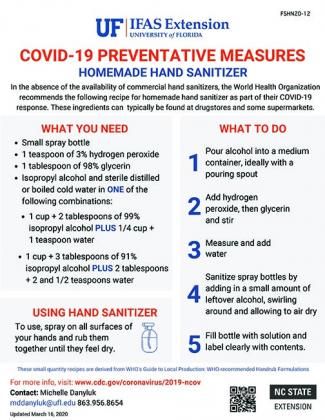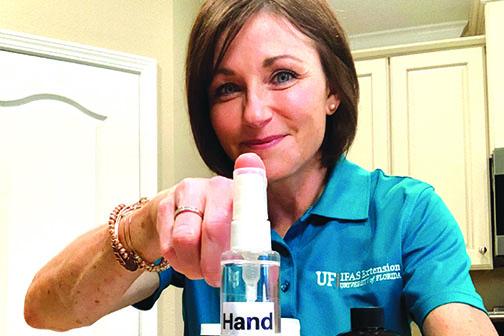0ne simple task each of us can do to limit spreading germs or pathogens is hand washing. The Centers for Disease Control and Prevention recommends handwashing often as one of the methods to protect ourselves during the spread of COVID-19.
Washing our hands with soap and water should be our first method for hand hygiene and hand sanitizers as the second.
When to Wash? Frequently. After blowing your nose, coughing, sneezing and any time you are in a public place. Additional times to wash your hands include before, during and after preparing food, before eating, after handling garbage, after a bathroom visit or changing diapers and after handling pets or their feed. Other suggested key times to wash your hands can be found on the CDC website, CDC.gov.
How to wash? Rinse your hands with clean, running water. Next, apply soap. This is the part where you want to spend some time – 20 seconds to be exact. Scrub your palm, fingers and in between, the backside of your hand and don’t forget about your nails, too. Soap is what lifts the germs and dirt from your hands and scrubbing helps to remove them further.
Listen while humming or singing to your favorite song for 20 seconds or sing the Happy Birthday song twice. After you’ve lathered up and scrubbed for 20 seconds, you are ready to rinse the dirt, grime and germs away. Use a clean towel to dry your hands or air dry if needed.
Although there is conflicting data on the transferal of germs from hands to faucet, you could use a clean paper towel to add an extra layer of protection when you turn the faucet on and off.
What do you do if soap and water are not available? The CDC recommends using an alcohol-based hand sanitizer with at least 60% alcohol. Be sure to check the label for the percent alcohol and how much you need to use to be effective. Make sure all areas of your hands are covered with the sanitizer and air dry. If you are looking for a homemade sanitizer to as part of your COVID-19 prevention measures, UF/IFAS Extension has a recipe online: http://edis.ifas.ufl.edu/pdffiles/FS/FS33500.pdf.
Please note there are very specific percentages for hydrogen peroxide, glycerin and isopropyl alcohol that should not be substituted.
While many of us have been washing our hands for years, now is a great time to go back to basics and practice each step: “Wet, Lather, Scrub, Rinse, and Dry” (CDC, 2020).
– Wendy Wood Lynch, extension agent III, Family & Consumer Sciences University of Florida – IFAS Extension Putnam County


